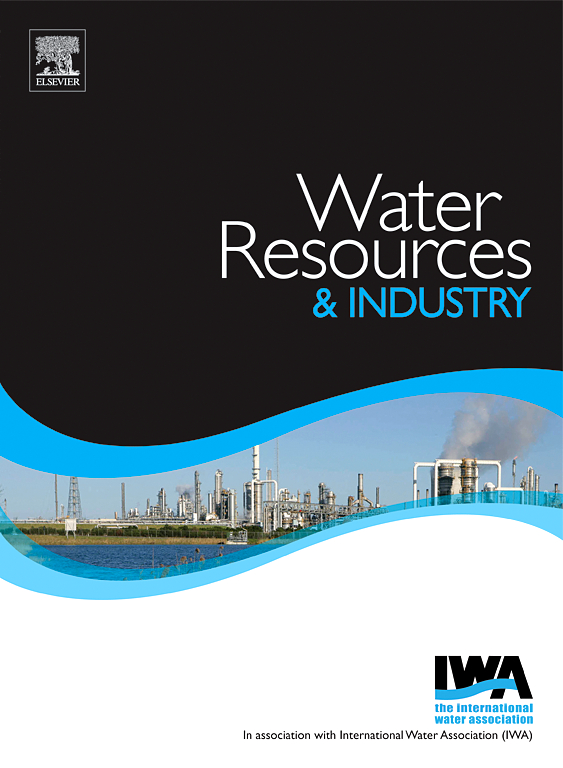Current and future chloride concentrations in a large river - will a disaster happen again?
IF 4.5
3区 工程技术
Q1 WATER RESOURCES
引用次数: 0
Abstract
Chlorides are considered as an important factor promoting the development of the golden algae (Prymnesium parvum) and their presence was crucial during the Oder River ecological disaster in 2022. Since industrial waters from mining activities in the Upper Silesia region are discharged not only into the Oder River, but also into the other large European River (Vistula), there is growing concern about a possible re-occurrence of such an event. Combining catchment modeling and in-situ monitoring, the impact of mining discharges from 17 active and inactive hard coal mines on the calculation profile of the Vistula River, located in a potential risk zone of golden algal blooms, has been investigated. Moreover, future chloride concentrations have been predicted through model simulations for two time horizons: near- (2024–2050) and far-future (2074–2099), and for two Representative Concentration Pathways: RCP 4.5 and RCP 8.5. The results showed significant variability in chloride concentrations with monitoring data, indicating concentrations already exceeding those observed during severe algal bloom events. Furthermore, despite the selected scenario and time horizons, the simulated chloride concentrations may still promote golden algae development under both dry- and wet-climate scenarios, with extreme values potentially surpassing 3000 mg/L. Our results emphasize the urgent need for proactive water management strategies to reduce chloride contamination, and to protect aquatic ecosystems in this river. Failure to act in this area may lead to a repetition of catastrophic ecological events.

一条大河中当前和未来的氯化物浓度——灾难会再次发生吗?
氯化物被认为是促进金藻(Prymnesium parvum)发育的重要因素,在2022年奥得河生态灾害中,氯化物的存在至关重要。由于上西里西亚地区采矿活动的工业用水不仅排入奥得河,而且排入另一条欧洲大河(维斯瓦河),人们越来越担心这种事件可能再次发生。结合集水区建模和现场监测,研究了位于金藻华潜在危险区的维斯瓦河17个活跃和不活跃的硬煤矿开采排放对计算剖面的影响。此外,通过模式模拟预测了两个时间范围的未来氯化物浓度:近期(2024-2050)和远期(2074-2099),以及两个代表性浓度路径:RCP 4.5和RCP 8.5。结果显示氯化物浓度与监测数据存在显著差异,表明浓度已经超过严重藻华事件期间观察到的浓度。此外,尽管所选择的情景和时间范围,模拟的氯化物浓度在干燥和潮湿气候情景下仍可能促进金藻的发育,极端值可能超过3000 mg/L。我们的研究结果强调迫切需要采取积极主动的水管理策略来减少氯化物污染,并保护这条河的水生生态系统。在这方面不采取行动可能会导致灾难性生态事件的重演。
本文章由计算机程序翻译,如有差异,请以英文原文为准。
求助全文
约1分钟内获得全文
求助全文
来源期刊

Water Resources and Industry
Social Sciences-Geography, Planning and Development
CiteScore
8.10
自引率
5.90%
发文量
23
审稿时长
75 days
期刊介绍:
Water Resources and Industry moves research to innovation by focusing on the role industry plays in the exploitation, management and treatment of water resources. Different industries use radically different water resources in their production processes, while they produce, treat and dispose a wide variety of wastewater qualities. Depending on the geographical location of the facilities, the impact on the local resources will vary, pre-empting the applicability of one single approach. The aims and scope of the journal include: -Industrial water footprint assessment - an evaluation of tools and methodologies -What constitutes good corporate governance and policy and how to evaluate water-related risk -What constitutes good stakeholder collaboration and engagement -New technologies enabling companies to better manage water resources -Integration of water and energy and of water treatment and production processes in industry
 求助内容:
求助内容: 应助结果提醒方式:
应助结果提醒方式:


